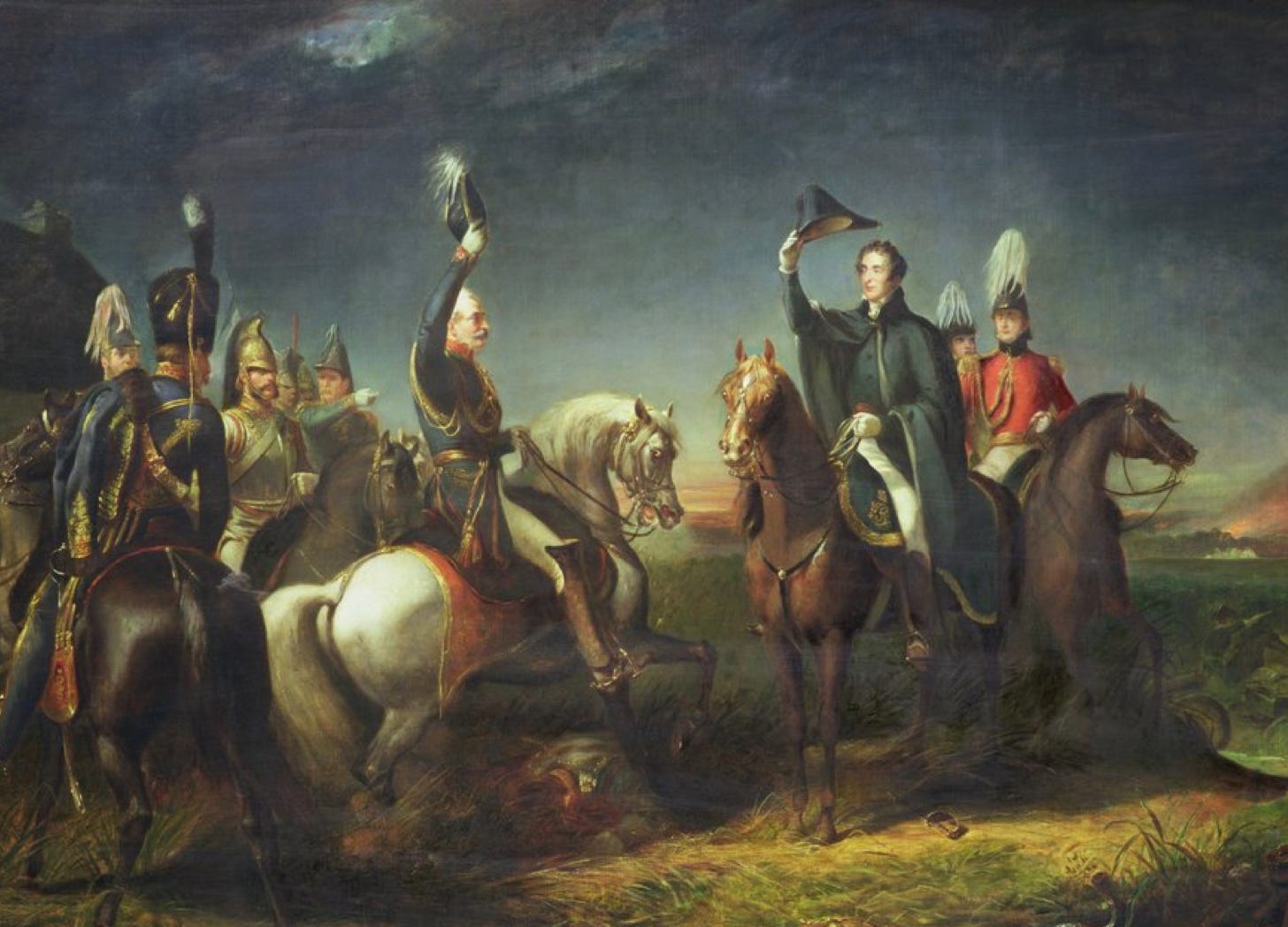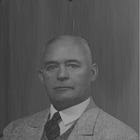In the issue of that magazine dated April, 1939 Wissen und Wehr (Knowledge and Defense) published a substantial reply to the three articles articles that Georg Wetzell had written in response to the introduction that Wolfgang Foerster wrote for his book Heerführer des Weltkrieges (Military Commanders of the World War.) The sub-series continued with this post presents a translation of this article made by Frederick W. Morton in 1939 and revised, with reference to the German original, by Your Humble Servant.
For the first post in this sub-series, please see
For links to translations of the articles written by General Wetzell and, when they appear, the other parts of Lieutenant Colonel Foerster’s article, please see
Wolfgang Foerster
The Picture of the Modern Military Commander:
A Word of Defense and Explanation
(Continued)
To demonstrate that Moltke was the first general to use the railroads as a new technical aid of strategy, causing a fundamental change in the conduct of war, I wish to cite Schlieffen. He says this of Moltke:
Although he was not the first man who happened upon the idea to shift troops by rail quickly from one place to another, he was the first military commander, who, with great foresight and clear logic, moved his various corps up to the front by several different routes and from several different directions so that the corps, upon detraining, would find the road to the concentration area almost automatically and would invariably join hands on the battlefield. He was the first general to execute a systematically planned concentration by rail.Schlieffen further speaks of Moltke and his closest collaborators that their efforts
developed the railroads into an instrument of warfare, without which the large armies of modern times can be neither organized, concentrated, moved up to the front, nor maintained. Since 1866, and especially since 1870, we have, therefore, a new era of conduct of war.That Moltke attached great importance to the telegraph, as well as to the railroad, as strategical aids is reflected by the following passages taken from his Instructions for Commanders of Large Units of 1869:
As the railroads serve transportation and movement, so the telegraph serves the transmission of information. They enable one mind to lead separate groups of armies to common objectives and make it possible to follow this situations in several widely separated theaters of war almost simultaneously, which was practically cut of the question in campaigns of the past.Thanks to these technical achievements, the new period of strategic conduct of war was marked by the definite aim at effecting uniform cooperation of separate lage units for the purpose of deciding the outcome of the battle.
Even prior to 1866, Moltke regarded the 'organization of separate marches with provisions made for a timely concentration as the true nature of strategy.' To be sure, even before Moltke, Napoleon and his opponents, especially Scharnhorst, had appreciated the thought expressed in this statement. Yet 'the idea, that the important thing in war is not for the armies to be together but to operate together, was brought out clearly for the first time in the strategy of Moltke', as General Erfurth points out in one of his recent writings.
Moltke saw the ideal in the concentric joint action in battle of several armies which at first are kept deliberately separated and employed in a simultaneous attack against the hostile front and flank, as in the case of Königgrätz. After the campaign of 1866, he wrote, in From the Regulations for Higher Formation Commanders:1
If it is possible on the day of battle to move up the armies from separate points and concentrate them on the battlefield, that is, if it is possible to direct the operations so that a final, brief march from different directions leads simultaneously against the front and flank of the opponent, strategy has achieved its optimum and great results are bound to follow.Moltke acknowledged this doctrine, not only while he was under the impression of the great victory of Königgrätz, but after the war of 1870-1871 as well, and he adhered to it to the end of his life. This is evidenced by the fact that he retained the sentence quoted above - with the concluding words printed in italics - in the 1885 edition of his Instructions.
In 1881, Moltke stated in a report on the Battle of Königgrätz:
I regard the union on the battlefield of two separately marching armies as the highest form of strategic conduct. As at Könnigrätz, Moltke had this lofty aim in mind again at the outset of the campaign of 1870, when he made his plans for the decisive battle on the Saar. Wetzell, himself, mentions
Moltke’s original plan of a joint action of three armies which were concentrated side by side, with the Second Army separated from the Third by the Vosges Mountains. He adds that this plan was rendered impracticable only through mistakes made by the subordinate commanders.
I fully agree with Wetzell that the Königgrätz solution does not represent the 'full content of the art of the high command of Moltke', and that his 'high command cannot be described unilaterally as a preferred basic form of concentration'. However, there is not one word in the article which indicates that I establish this claim; I merely referred to Königgrätz as the successful solution and the march to the Saar as the unsuccessful solution of the 'strategically planned ideal battle' - which is in accord with Moltke’s own words and obviously in complete agreement with Wetzell.
I differ from Wetzell only in that I failed to observe in the strategic conduct of Napoleon, or in that of his opponents, a definite effort at a 'strategically planned ideal battle'. I expressly admitted that 'many operations plans of the pre-Moltke era revealed or predicted the intention of concentrating separate armies on the battlefield for joint action'. (General Erfurth, in his study, also arrives at the conclusion: 'Operations conducted with separate armies during the time of Napoleon were regarded invariably as a necessary evil.’)2
Wherever, as in the case of Leipzig and Waterloo, such joint action on the part of the opponents of Napoleon was effected on the battlefield, it was not the result of a strategic plan, for from a technical viewpoint it was practically impossible 'to direct separate army units to common objectives in accordance with one and the same plan'. On the contrary, such concentrations occurred in the course of operations whose original plans were changed 'by the enlightened intervention of the commander of one of the separate armies'. (In both cases, this was Field Marshal Blücher, assisted by his chief of staff, Gneisenau).
To be continued …
For links other parts of this series, please see:
Helmuth von Moltke Aus den Verordnungen für die Höheren Truppenführer von 24. Juni 1869 (From the Regulations for the Higher Formation Commanders) in Helmuth von Moltke Strategische und Taktische Aufsätze (Strategic and Tactical Essays) (Berlin: E.S. Mittler, 1900) pages 210-211 (All links to the website of the Hathi Trust.)
The ‘study’ in question seems to be Waldemar Erfurth Der Vernichtungssieg: Eine Studie über der Zusammenwirken getrennter Heeresteile (Victory of Annihilation: A Study of the Cooperation of Separated Parts of an Army) (Berlin: E.S. Mittler, 1939). For an earlier work that expresses similar ideas about the operations of widely separated parts of a force in the field, see Waldemar Erfurth Die Überraschung im Kriege (Surprise in War) (Berlin: E.S. Mittler, 1938). A translation into English can be found on the website of the US Government Printing Office, courtesy of the Quantico Renaissance.







There’s a great deal attributed here to Moltke with train and telegraph that was done during the American Civil War 1861-1865.